Inversion Method For Hair Growth: Full Guide To Faster Regrowth
Experience more than just hair growth by adding this method to your regimen.
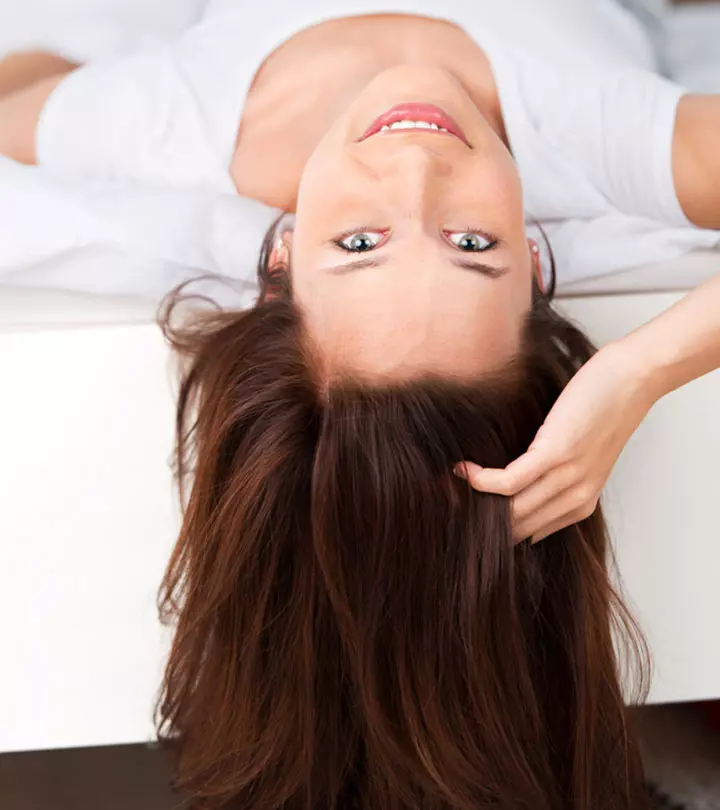
Image: Shutterstock
The inversion method for hair growth is gaining the popularity it deserves. Anecdotal evidence suggests that it is a low-risk method of faster hair regrowth if done correctly. But the question is, does the inversion method really work for hair growth? Or, is it just another hoax? We did some digging and found valuable information. Read on to find out the real truth about the inversion method for hair restoration. Scroll down!
In This Article
What Is the Inversion Method?
The inversion method for hair growth is based on the hypothesis that increased blood flow to the scalp stimulates hair growth.
The technique uses natural hair products and various ways to increase the blood flow by hanging the head upside down. You may:
- Lie on the edge of the bed with your head hanging upside down
- Do a headstand/handstand
- Use inversion tables
But does simply hanging your head upside down promote fast hair growth?
Key Takeaways
- Anecdotal evidence suggests that the inversion method helps increase your hair by 6 to 8 inches per year.
- Massaging the hair before keeping the head inverted increases blood flow to the scalp and promotes hair growth.
- Though safe, you may experience a headache if you keep your head inverted for more than 4 minutes.
Does The Inversion Method Really Work For Hair Growth?
There is no scientific proof supporting the inversion method for hair growth although anecdotal evidence from popular YouTubers and bloggers states that it is effective
. As per the claims, the inversion method increases blood flow to the scalp and can help the hair grow 6-8 inches per year, depending on your hair type.
It is believed that an increase in blood flow to the scalp and hair follicles minimizes hair loss and triggers a growth spurt. Let’s explore that in detail in the next section.
Science Behind The Inversion Method For Hair Growth

The practice of performing scalp massages for hair growth is widespread. Adding to that, the inversion method involves massaging the scalp with oils and then keeping the head inverted for 4 minutes. Here is how it helps with hair growth:
- Massaging the scalp increases blood flow to the hair follicles, improves hair strength, and promotes hair growth (1), (2).
- Using oils like peppermint, rosemary, and lavender stimulates hair growth (3), (4), (5). Massaging with oils prevents hair damage, keeps your locks moisturized, and minimizes hair breakage (6).
The inversion method is considered safe. However, hanging your hair upside down may have side effects.
Is The Inversion Method Safe?
The inversion method is considered safe when it is followed in the right way. If you keep your head upside down for more than four minutes, you may experience headache and fatigue.
It is recommended to take it slow. Follow it for a week and take a month-long break to let your body adapt to the increased blood flow.
Avoid the inversion method if:
- You have underlying conditions like blood pressure, heart disease, spinal injury, vertigoi A sudden sensation during which one feels internal or external spinning triggered by moving too quickly in a weak physical state. , and herniai A condition in which an internal organ part protrudes through an abnormal opening on the tissue or muscle wall. .
- You are pregnant.
Consult a healthcare professional before trying the inversion method. If you get a go-ahead from the doctor and want to try this hair care method, follow the instructions given below.
The Inversion Method For Hair Growth: How To Do It
1. Choose The Oil

- Choose the oil as per your preference. Adjust the quantity according to your hair type and length.
- If you are using an essential oil, dilute it with carrier oils, such as coconut, argan, olive, jojoba, or almond oils. These oils are best for your hair.
- Warm the oil and gently apply it evenly to your scalp and hair tips.
- Avoid pulling the hair. Use a wide-toothed comb to distribute the oil evenly.
2. Massage The Scalp

- Massage the scalp in circular motions with the fingertips. You can knead your scalp gently with the palm.
- Move your fingers in a clockwise or anticlockwise manner to stimulate the scalp.
3. Flip Your Head Upside Down

You may:
- Lie on your back at the edge of your bed with your head hanging down.
- Sit on a chair and bend forward to get your head down.
- Do a headstand (if you know how to do it). It is better not to try this to avoid injuries.
- Stay in this position for a maximum of four minutes.
After four minutes, wash your hair thoroughly. Repeat every alternate day for a month. However, discontinue this method if you experience discomfort or dizziness.
A blogger shares her experience with the inversion method for hair growth and the changes she witnessed: “This ended up being foretelling because the front of my hair and the sides of my hair are the only areas that grew (0.50″). The top crown of my head and the back of my head (nape area) didn’t increase in length at all. My ending length? Seven inches! (i)”
 Quick Tip
Quick TipThe inversion technique is pretty simple and easy to perform. If you are wondering which oils to use for an effective result, here is a list.
Top 5 Oils To Use For The Inversion Method
| Oils | Benefits |
| Coconut Oil | ● Virgin coconut oil has antimicrobial properties and prevents scalp acne (7). It helps unclog pores and promote hair growth. ● Coconut oil is a good moisturizer and lubricant as it has fatty acids (8). It penetrates the hair shafts and binds to the hair proteins to prevent damage and breakage (9). ● Using coconut oil as a pre-wash can prevent the damaging effects of SLS on the hair (10). |
| Olive Oil | ● Traditionally, olive oil has been used to improve hair strength and shine. ● It contains oleuropein, which was found to stimulate hair growth in mice studies (11). ● It has antibacterial properties and soothes the scalp (12). |
| Sweet Almond Oil | ● It is an emollient that softens the scalp and hair and improves manageability (13). |
| Jamaican Castor Oil | Anecdotal evidence suggests that castor oil promotes hair growth, although there are no scientific studies to back it up. |
| Grapeseed Oil | Grapeseed oil is rich in linoleic acid and fatty acids that can keep the hair healthy and shiny. Mice studies have shown that the components in grapeseed oil can promote hair growth (14). |
 Quick Tip
Quick TipApart from quick hair growth, the inversion method claims to offer other health benefits.
Other Health Benefits Of The Inversion Method
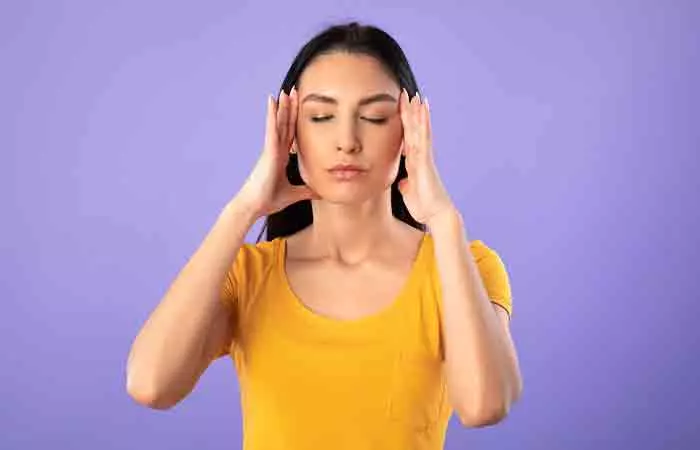
Although these are not proven benefits, the inversion method may:
1. Promote Anti-Aging
It is believed that the inversion method helps to improve the complexion and boost the cell turnover rate.
2. Improve Lymphatic Drainage
The inversion method may help drain out excess lymph fluidsi A clear or white-ish fluid made of white blood cells that must consistently flow through lymph vessels to attack harmful bacteria. and flush out toxins.
3. May Improve Focus Or Concentration
Increased blood flow may deliver more nutrients and oxygen to the brain, boosting concentration, and helping you stay focused and alert.
There is no scientific backing to support using the inversion method for hair growth. Anecdotal evidence suggests that the inversion method increases blood flow to the scalp, thereby promoting hair growth. Science does agree with massaging the scalp to stimulate hair growth and improve scalp health due to increased blood flow. Using essential oils also replenishes hair and induces hair growth. The inversion method is safe to try, but if you experience fatigue or headaches, you should discontinue this practice immediately. Also, you should not try this method if you have an underlying health condition or are pregnant.
Frequently Asked Questions
Can you wash your hair during the inversion method?
No. You can wash your hair after the inversion method to wash out the oils from it.
Does the inversion method grow new hair?
There is no scientific evidence to prove that the inversion method for hair treatment helps you grow new hair or boosts hair growth. But many people claim that it could grow your existing hair by 6-8 inches per year.
Can the inversion method cause hair damage?
In general, the inversion method doesn’t cause any hair damage. But, if done aggressively, or frequently, where the hair is being pulled or not being treated following proper technique, it might damage the hair.
How long will it take to see results from the inversion method?
Depending on the hair growth rate in individuals, it may show varying results in different people.
Check out the informative video below to unlock the secrets of faster hair growth with the inversion method. Explore the straightforward steps to achieve longer and thicker hair in a remarkably short time.
Personal Experience: Source
StyleCraze's articles are interwoven with authentic personal narratives that provide depth and resonance to our content. Below are the sources of the personal accounts referenced in this article.
i. The Inversion Method for Natural Hair: My 1-Week Resultshttps://hairdiary.wordpress.com/2013/09/07/the-inversion-method-for-natural-hair-my-1-week-results/
References
Articles on StyleCraze are backed by verified information from peer-reviewed and academic research papers, reputed organizations, research institutions, and medical associations to ensure accuracy and relevance. Read our editorial policy to learn more.
- Standardized Scalp Massage Results in Increased Hair Thickness by Inducing Stretching Forces to Dermal Papilla Cells in the Subcutaneous Tissue
https://www.ncbi.nlm.nih.gov/pmc/articles/PMC4740347/ - Self-Assessments of Standardized Scalp Massages for Androgenic Alopecia: Survey Results
https://link.springer.com/article/10.1007/s13555-019-0281-6 - Peppermint Oil Promotes Hair Growth without Toxic Signs
https://www.ncbi.nlm.nih.gov/pmc/articles/PMC4289931/ - Rosemary oil vs minoxidil 2% for the treatment of androgenetic alopecia: a randomized comparative trial
https://pubmed.ncbi.nlm.nih.gov/25842469/ - Hair Growth-Promoting Effects of Lavender Oil in C57BL/6 Mice
https://www.ncbi.nlm.nih.gov/pmc/articles/PMC4843973/ - Hair Cosmetics: An Overview
https://www.ncbi.nlm.nih.gov/pmc/articles/PMC4387693/ - ANTIBACTERIAL ACTIVITY OF HYDROLYZED VIRGIN COCONUT OIL
https://www.researchgate.net/profile/Jansen_Silalahi/publication/327542654_Antibacterial_activity_of_hydrolyzed_virgin_coconut_oil/links/5a8e98f00f7e9b2fac8324ae/Antibacterial-activity-of-hydrolyzed-virgin-coconut-oil.pdf - A randomized double-blind controlled trial comparing extra virgin coconut oil with mineral oil as a moisturizer for mild to moderate xerosis
https://pubmed.ncbi.nlm.nih.gov/15724344/ - Effect of mineral oil, sunflower oil, and coconut oil on prevention of hair damage
https://pubmed.ncbi.nlm.nih.gov/12715094/ - Quantitative measurement of the penetration of coconut oil into human hair using radiolabeled coconut oil
https://www.researchgate.net/profile/Nitesh_Bhalla/publication/223969077_Quantitative_measurement_of_the_penetration_of_coconut_oil_into_human_hair_using_radiolabeled_coconut_oil/links/573530df08aea45ee83b1636.pdf - Topical Application of Oleuropein Induces Anagen Hair Growth in Telogen Mouse Skin
https://journals.plos.org/plosone/article?id=10.1371/journal.pone.0129578 - Oleuropein in Olive and Its Pharmacological Effects.
https://www.ncbi.nlm.nih.gov/pmc/articles/PMC3002804/ - Anti-Inflammatory and Skin Barrier Repair Effects of Topical Application of Some Plant Oils
https://www.ncbi.nlm.nih.gov/pmc/articles/PMC5796020/ - Procyanidin Oligomers Selectively and Intensively Promote Proliferation of Mouse Hair Epithelial Cells In Vitro and Activate Hair Follicle Growth In Vivo
https://linkinghub.elsevier.com/retrieve/pii/S0022-202X(15)40418-X
Read full bio of Dr. Shruti Chavan
Read full bio of Annie Jangam
Read full bio of Eshna Das
Read full bio of Swathi E





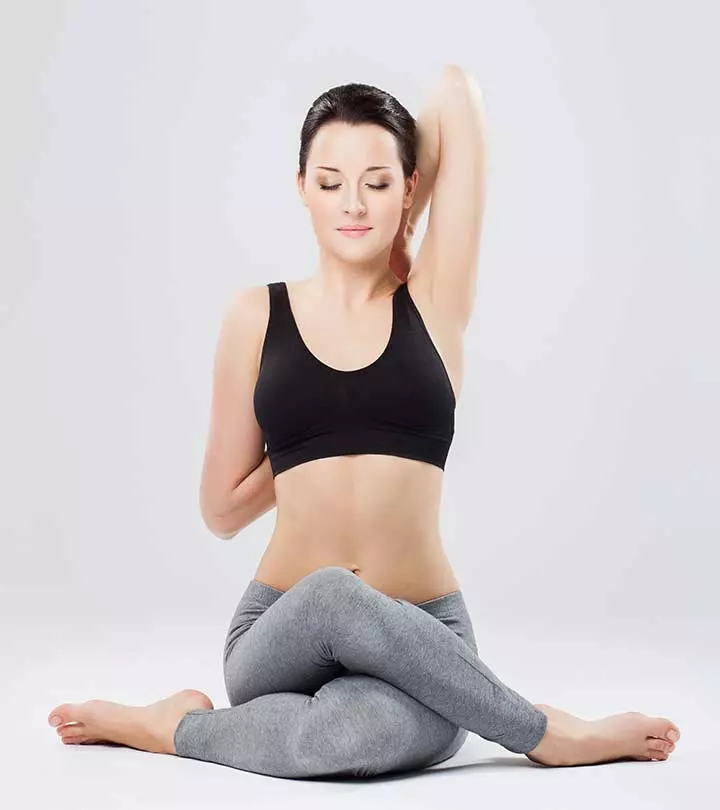




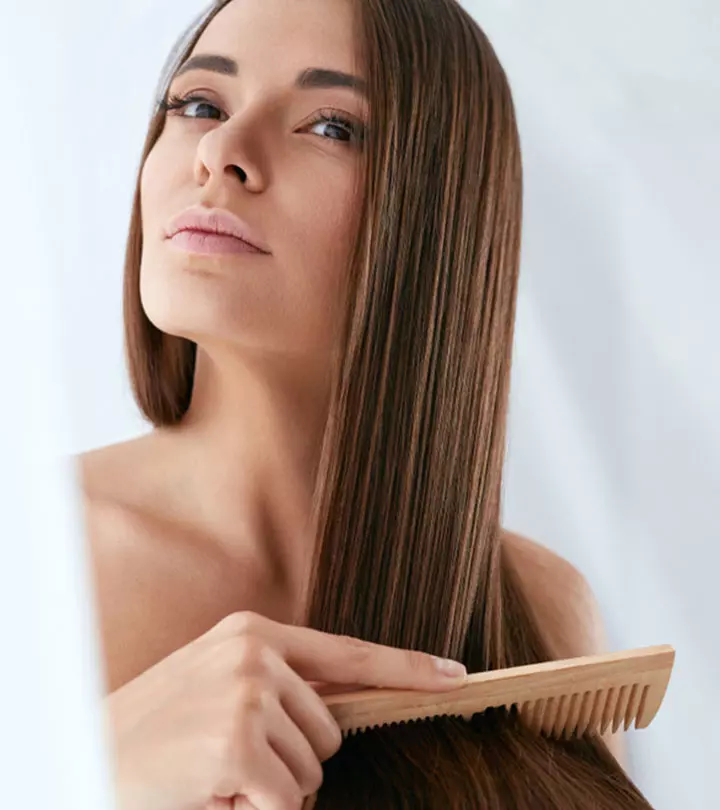
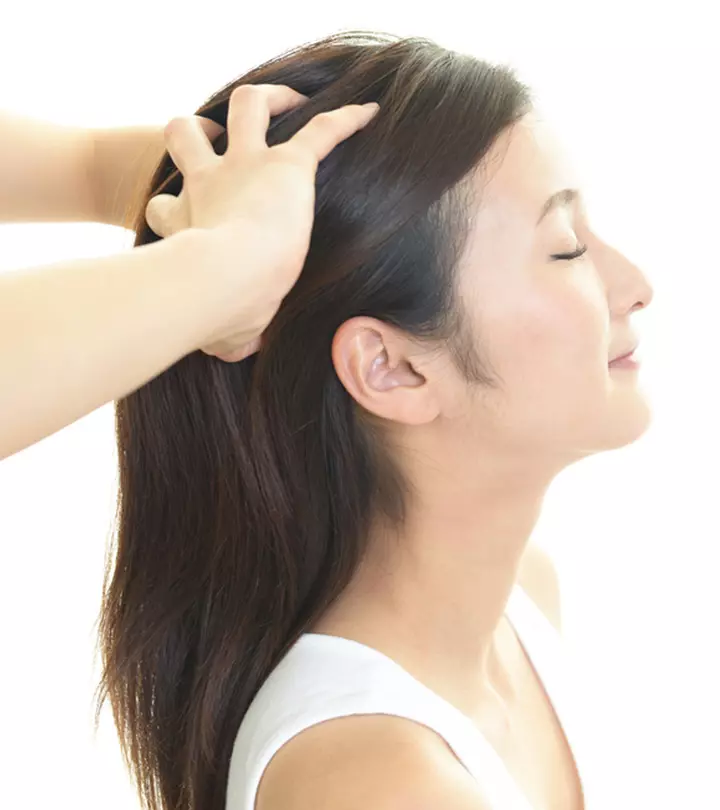



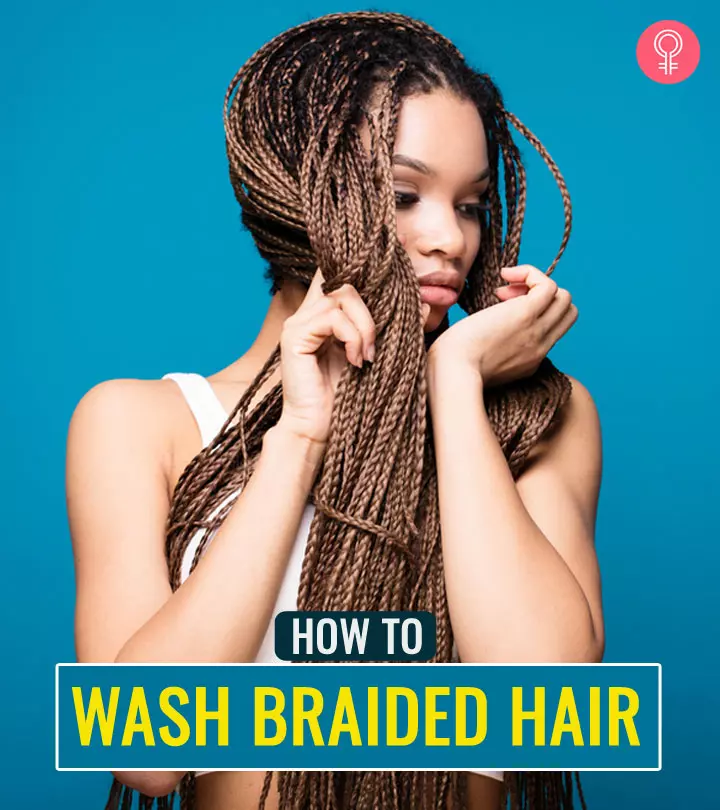



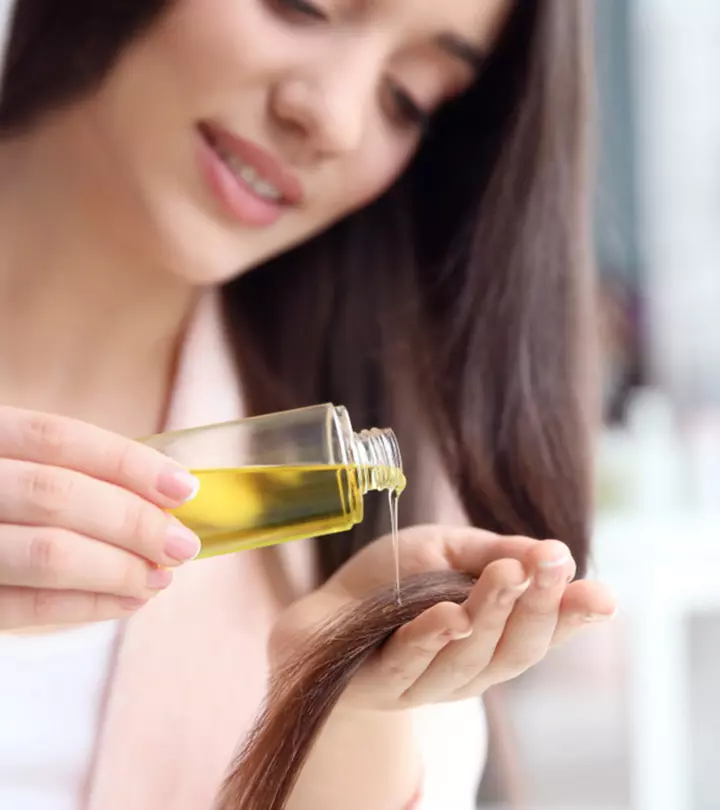







Community Experiences
Join the conversation and become a part of our empowering community! Share your stories, experiences, and insights to connect with other beauty, lifestyle, and health enthusiasts.